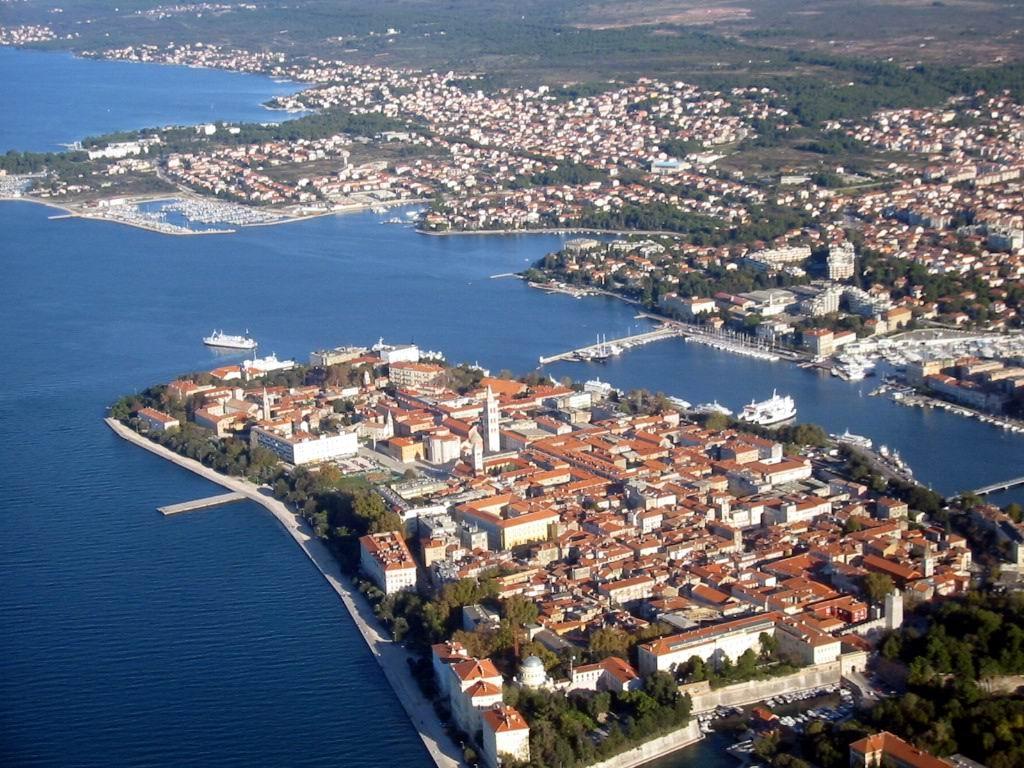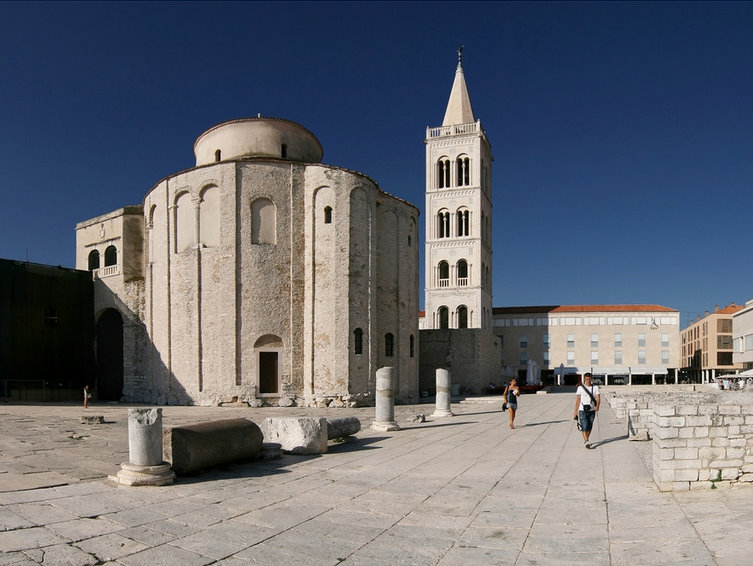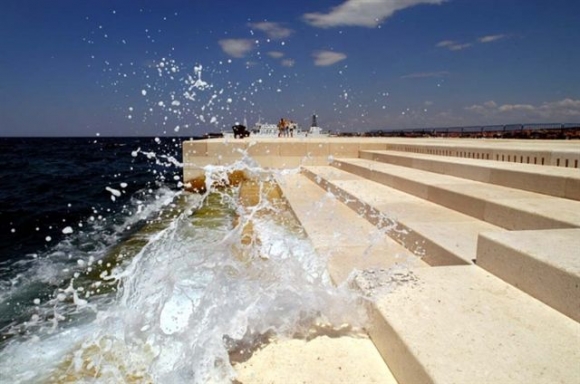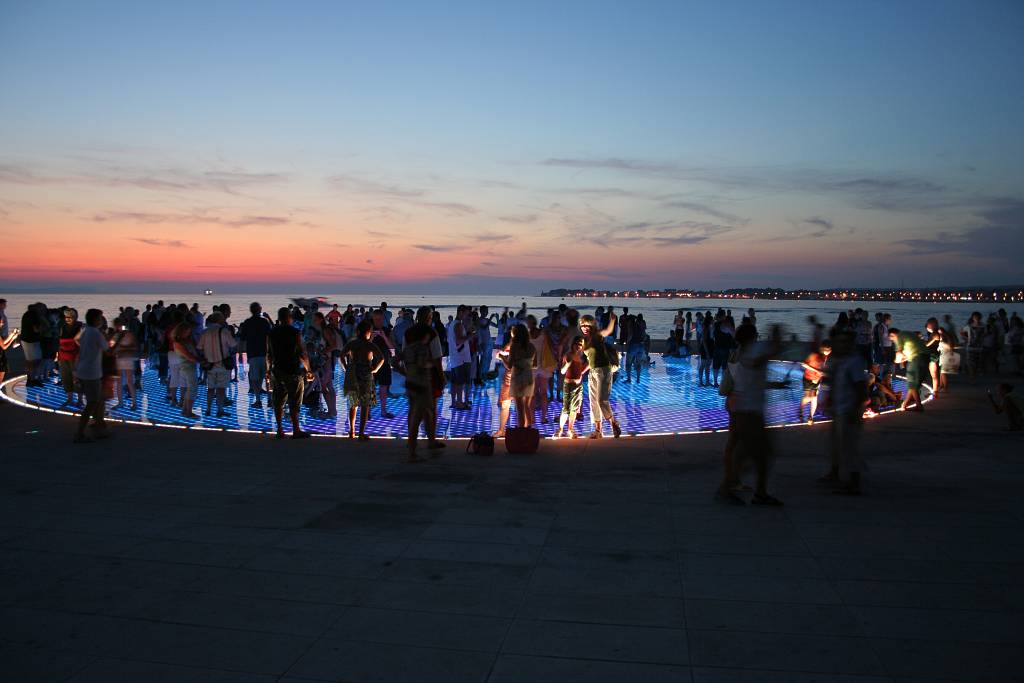Zadar
General info
Zadar lies on the Adriatic coast in northern Dalmatia. Zadar is the fifth largest city in Croatia (72 718  inhabitants) and is located at 4 km long and 500 meters wide peninsula, which separates the harbor from the waters of Zadar Channel. Old Town is located at the northwest end of the peninsula, the new urban districts (called Voštarinica and Brodarica) occupy the northeast coast, which is called Borik. The city itself is valuable for its numerous historical and cultural monuments and for its cultural facilities is one of the most attractive places in Dalmatia. Zadar is also a major ferry port and there are two yacht marinas.
inhabitants) and is located at 4 km long and 500 meters wide peninsula, which separates the harbor from the waters of Zadar Channel. Old Town is located at the northwest end of the peninsula, the new urban districts (called Voštarinica and Brodarica) occupy the northeast coast, which is called Borik. The city itself is valuable for its numerous historical and cultural monuments and for its cultural facilities is one of the most attractive places in Dalmatia. Zadar is also a major ferry port and there are two yacht marinas.
History and historical monuments
The original inhabitants of Zadar were Liburnian (9th century B.C.). During the Second World War was Zadar as an important fascist fortress bombed by allied forces. After the liberation in 1944 Zadar was incorporated into Yugoslavia. Today Zadar bears strong marks of the Roman urban solutions (regular network of streets with a card Decumani). Antique monuments have been discovered during Second War bombing (the foundations of the temple, the Roman basilica columns, houses in the forum, etc.). Zadar was the first city in Croatia, which had the university in year 1396. The university was founded by the Dominicans in the area of the monastery of St. Dominic.
solutions (regular network of streets with a card Decumani). Antique monuments have been discovered during Second War bombing (the foundations of the temple, the Roman basilica columns, houses in the forum, etc.). Zadar was the first city in Croatia, which had the university in year 1396. The university was founded by the Dominicans in the area of the monastery of St. Dominic.
The most valuable monument is the pre-romanesque Church St. Donat (Sveti Donat) from 9th century. The church is the most monumental building in this period in eastern coastline. It is 27 meters high and stands on the former Roman forum.
Another important building is the Cathedral of St. Anastasia (Sveta Stošija). It is a rare Romanesque building from the 12th - 13th century. From the bell tower is a beautiful view of the entire Zadar.
In Zadar was preserved remains of renaissance walls, including Mainland Port (Kopnena Vrata), Hag Tower and the rest of the tower walls.
Zadar has a big new attraction (since 2005) called "Sea Organ" (Morkse orgulje). The inspiration for the organ was a natural phenomenon that creates waves - sounds reverberating from the rocky cleft water flooded the rocky coastline. Organ is located in the western part of the old town on the Istrian Waterfront. It consist of 35 tubes of different diameter. Tubes are built into the sea gradually covered the wall. Each level consists of a wide staircase, after which you can go down to the sea surface.
On the same place was installed (2008) other attraction called "Sun Salutations" (Pozdrav Suncu). This project is designed to complement the installation of Marine organ and create with a harmonious unit with them. Greeting the sun is in the form of a large circle (diameter 22 meters) and is embedded in the stone pavement. It consists of 300 multi-layer glass plates, which are located above the photovoltaic solar modules. After sunset, the light will light up all the built elements and the program set a magical game with colorful light effects.
From Zadar many museums we have to name: Archaeological Museum (Arheoložki muzej) in the Medulićov street, permanent exhibition of religious art - gold and silver of Zadar (Zlato i srebro Zadra) in the Stomorica street, National museum with art galleries and science departments (Narodni muzej s Galerijom umjetnina i prirodoslovnim odjelom), Maritime Museum (Pomorski muzej) in the Š. Kožičić-Benj street.
